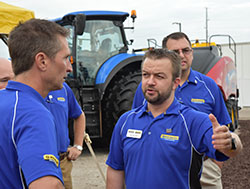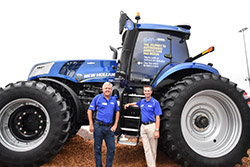 Robert Bonnie, Under Secretary for the USDA‘s Natural Resources and Environment, announced a new restoration strategy following the Deepwater Horizon oil spill. The program is a three-year, $328 million project that will focus on improving water quality and healing ecosystems in the lands around the Gulf of Mexico. This strategy will be the guide for the USDA’s efforts on private land.
Robert Bonnie, Under Secretary for the USDA‘s Natural Resources and Environment, announced a new restoration strategy following the Deepwater Horizon oil spill. The program is a three-year, $328 million project that will focus on improving water quality and healing ecosystems in the lands around the Gulf of Mexico. This strategy will be the guide for the USDA’s efforts on private land.
The USDA serves as the chair for the Gulf Coast Ecosystem Restoration Council (RESTORE), along with the five Gulf states, other federal agencies and landowners. That group will seek ways to best use the USDA funding, as well as the Deepwater Horizon settlement.
“We’re working side-by-side with farmers, ranchers and forest landowners to improve their operations while taking care of natural resources in the region,” Bonnie said. “With most of the land in the region privately owned, working lands on the Gulf Coast are pivotal to the region’s recovery.”
As part of NRCS’ Gulf of Mexico Initiative (GoMI), this three-year plan strategically directs existing and anticipated Farm Bill funds for technical and financial assistance through a variety of Farm Bill conservation programs to key coastal counties where they can have the best returns. From now through 2018, NRCS will help agricultural producers plan and implement conservation improvements to 3.2 million acres in priority areas, which ultimately result in cleaner water and healthier ecosystems. Assistance is provided through a number of Farm Bill programs, including the Environmental Quality Incentives Program (EQIP), Conservation Stewardship Program (CSP) and Agricultural Conservation Easement Program (ACEP).
The program will utilize a variety of voluntary conservation programs to help adopt conservation practices; programs like no-till, planting cover crops, managing nutrients, installing grade stabilization structures and water control structures. Projections suggest these efforts will reduce 11 tons of sediment runoff and 2.65 million pounds of nutrients.










